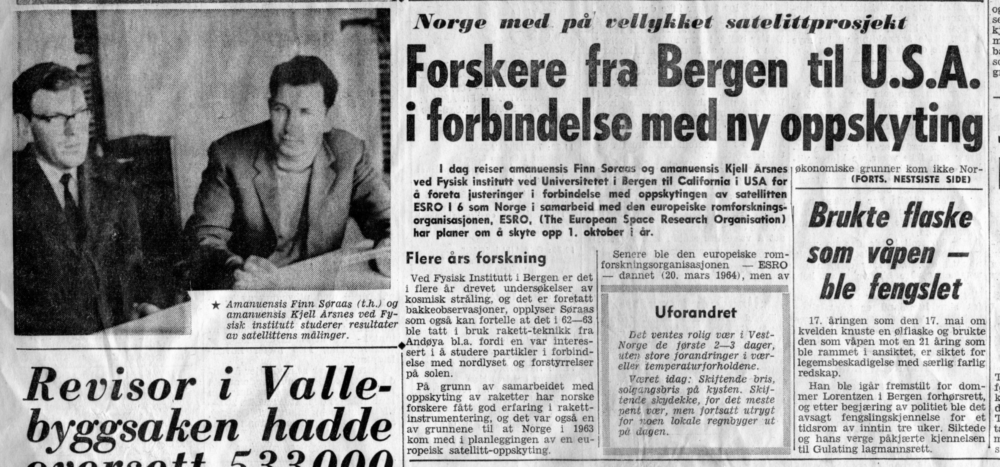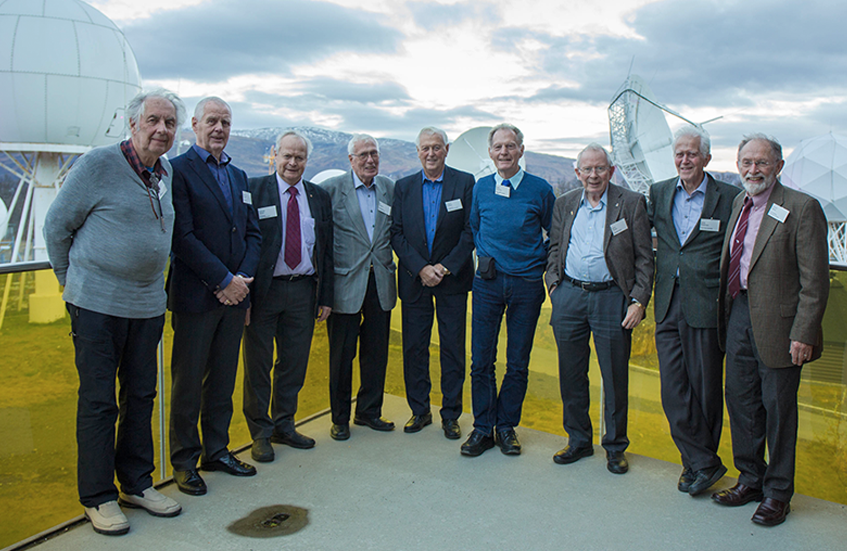Some of those who worked on ESRO-1A, at the 50th anniversary of the launch. From right: Chuck Deehr (Alaska), Arne Pedersen, Eivind Thrane, Peter Stauning (Denmark), Kolbjørn Adolfsen, Alv Egeland, Gunnar Skovli, Arvid Øvergård, Finn Søraas (Photo: Ellen Wiggen, KSAT)
The 50th anniversary of the beginning of Norway’s space exploration was celebrated in Tromsø on October 18, 2018. The anniversary celebrated the launch of ESRO-1A on October 3, 1968. Representatives from ESA, the Norwegian Space Centre, Andøya Space Center, the Kongsberg Satellite Services, and several others, including UiBs Profs. Finn Søraas (Em.) and Kjellmar Oksavik, were present at the celebration.
At the anniversary symposium, Prof. Em. Søraas presented a talk called “University of Bergen’s ESRO-1 project” and Prof. Oksavik gave a talk on an ongoing satellite project at UiB called “SMILE: New opportunities for global imaging of space weather near Earth.”
The ESRO-1A was launched from the Western Test Range in California. ESRO-1A was the first satellite to be built by the European Space Organization (ESRO) and the second to be launched. The satellite contained scientific instruments from several European countries, including Norway, and its job was to explore aurora and the ionosphere. The Norwegian experiments on ESRO-1A were designed by the University of Bergen, the University of Oslo and the Norwegian Defense Research Establishment. Since the satellite was launched into a polar orbit, the Tromsø Telemetry Station–which was to later become Kongsberg Satellite Services–was central for communication with the satellite.

Bergen Contribution
The space physics group in Bergen had for several years–since December 1962–participated in the rocket program at Andøya, measuring energetic protons and electrons using solid state detectors made in-house. The group was thus well suited to participate in the ESRO project. As a pioneer project, ESRO-1A paved the way for Bergen to participate in a number of subsequent satellite projects including Viking, Crres, Geotail, Polar, Cluster, etc.

Bergen Team
Team leader: Prof. Bjørn Trumpy
- Scientists
- Kjell Aarsnes and Finn Søraas (project scientists)
- Rolf Amundsen, Halvor Lindalen, Jan Åke Lundblad
- Mechanical Work
- Hans Torgilstveit
- Electronic Work
- Asbjørn Dale, Terje Ringøye
Many students based their theses on data from the ESRO-1A/B satellites.




